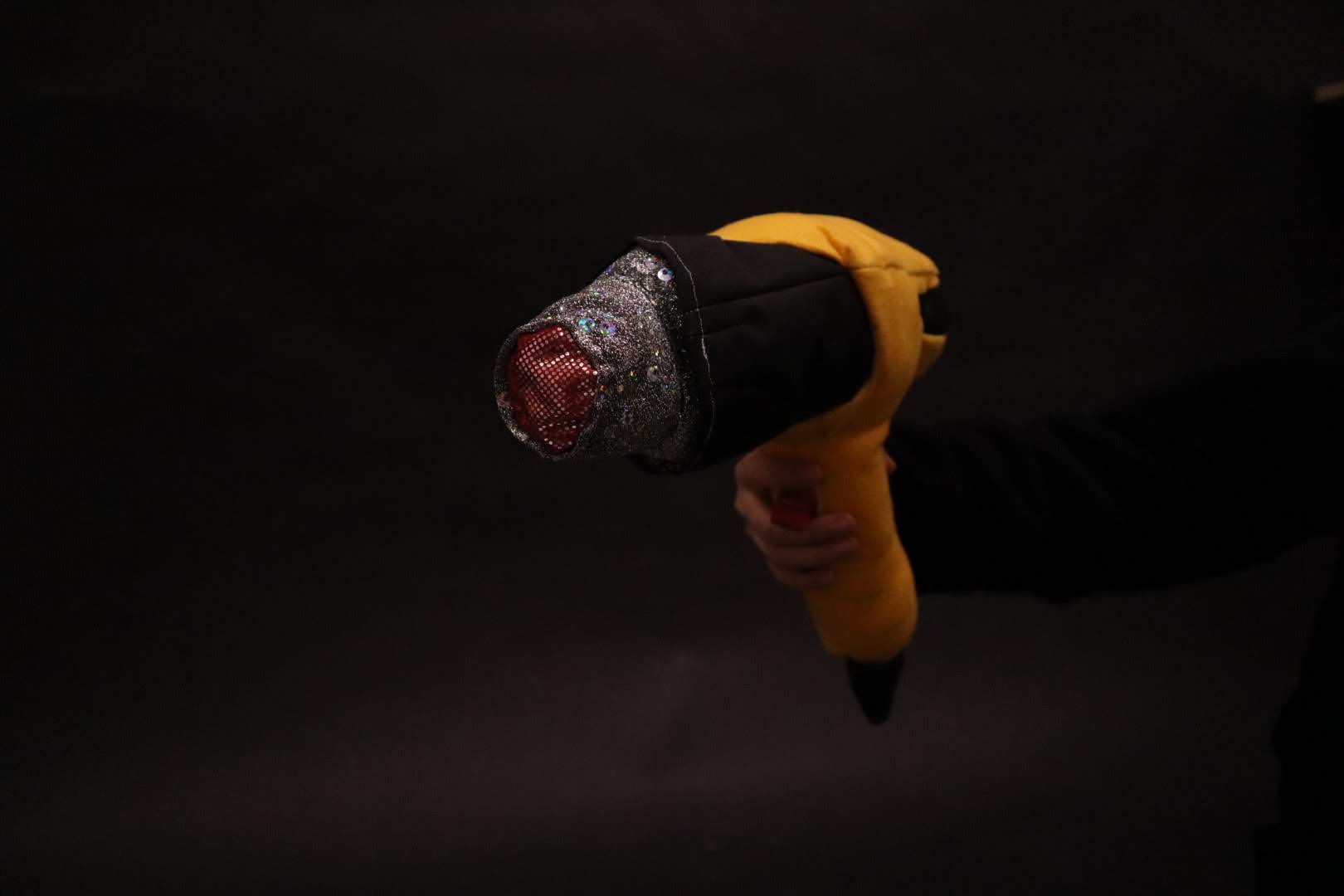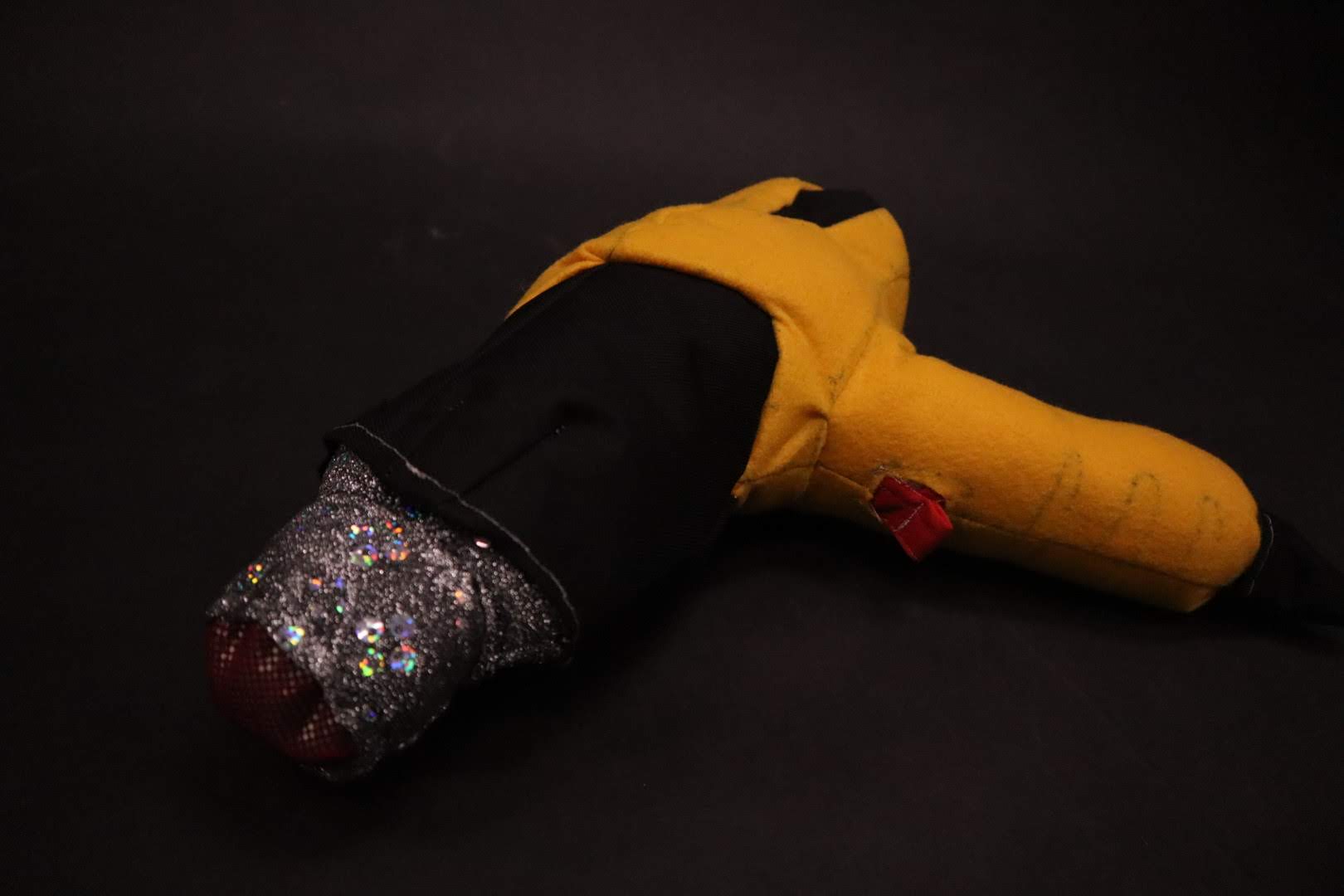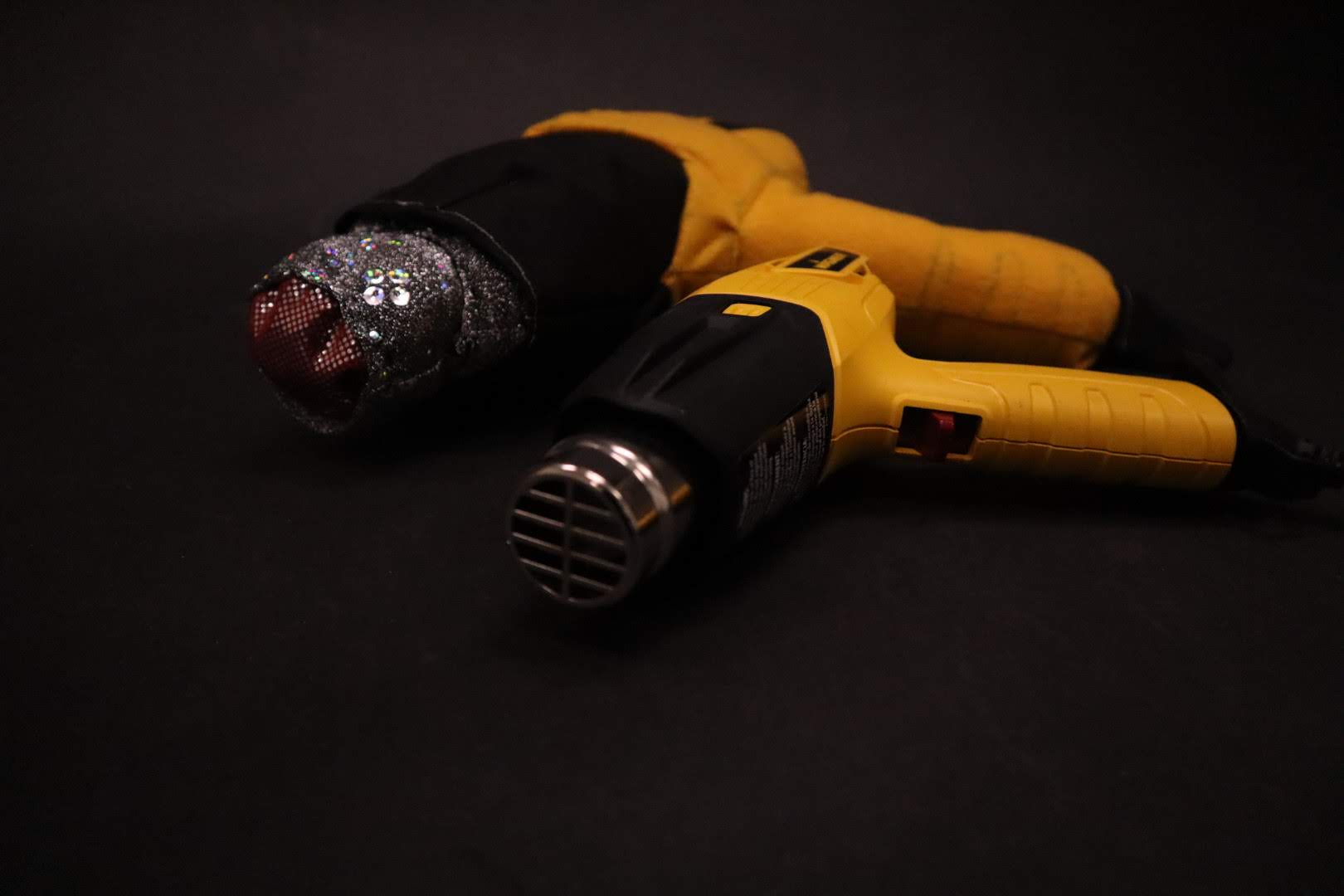Doppelgänger – Kevin Thies
For my Doppelganger, I took my trusty heat gun and copied it at a rough 2:1 scale. I chose my heat gun because it’s a tool that I used in cosplay work, taking flat sheets of foam and cutting it based on a pattern and heat-forming curves, a process nearly identical to that of copying the tool itself. It’s the tool that got me familiar with patterning and forming shapes to the human body. It was difficult taking such a geometric yet fluid and ergonomic shape and changing that into flat pattern pieces. As I went, I ended up taking out more and more minute details that at first I thought I’d be able to capture due to the difficulties of scale and having it show up in the final product, like taking out some of the fine detail in the handle and towards the bottom of the grip.
The fabric choice was intended to capture the tool as it is in life. The yellow plastic of the heat gun is softer and more friendly to the hand, while the black is harder and more durable, hence the treated denim material. The hot end evokes heat and the metallic shine, and the sequins give it a distinct texture.
In turning the taped object into pattern pieces, I ended up having to re-draw the pattern in CAD anyways to scale it up, so I decided to use that to laser cut my fabric as well. In the future, I’ll have to use some sort of dotted line or light score to mark the sew line, as in the end I had to go back and re-draw those anyways, having cut the seam allowance, and the pen I used marking those ended up bleeding through the felt. However, it does give it more of a crafted look and less like a finished and polished piece, which is fitting for a practical tool.
I’m happy with the final product, and it was a fun working with the tape-pattern process that I’d only used for foam before. the materials certainly have different pattern considerations, which is something to remember. For example, foam is edge-glued, and doesn’t have a seam allowance.




